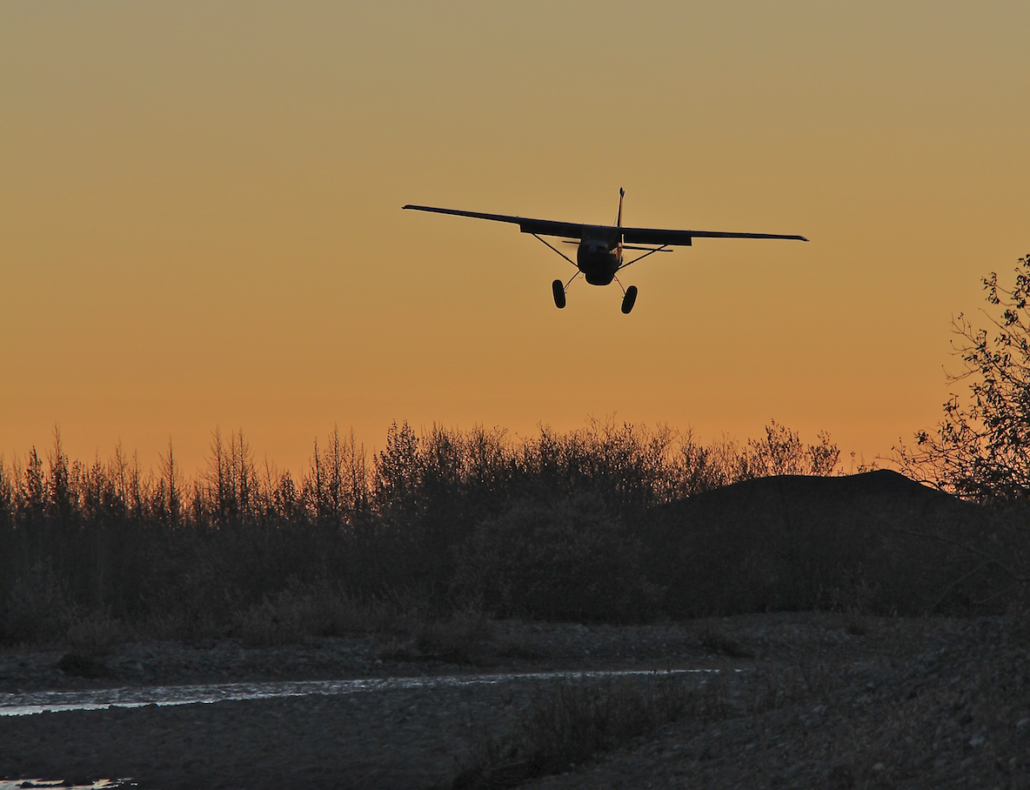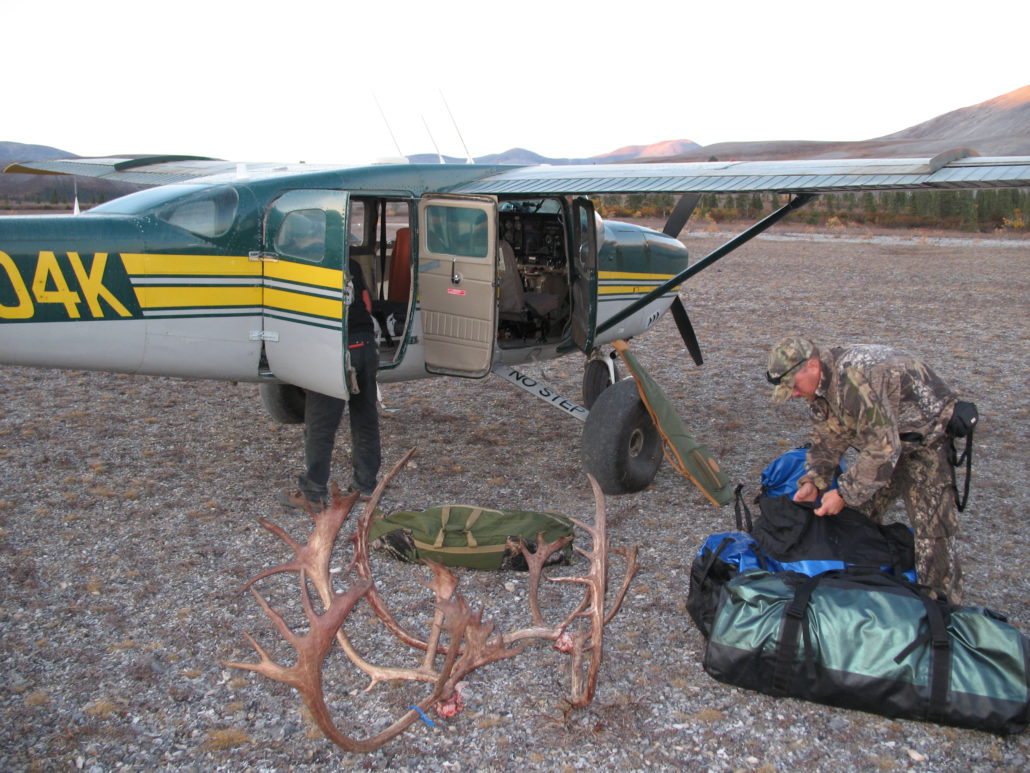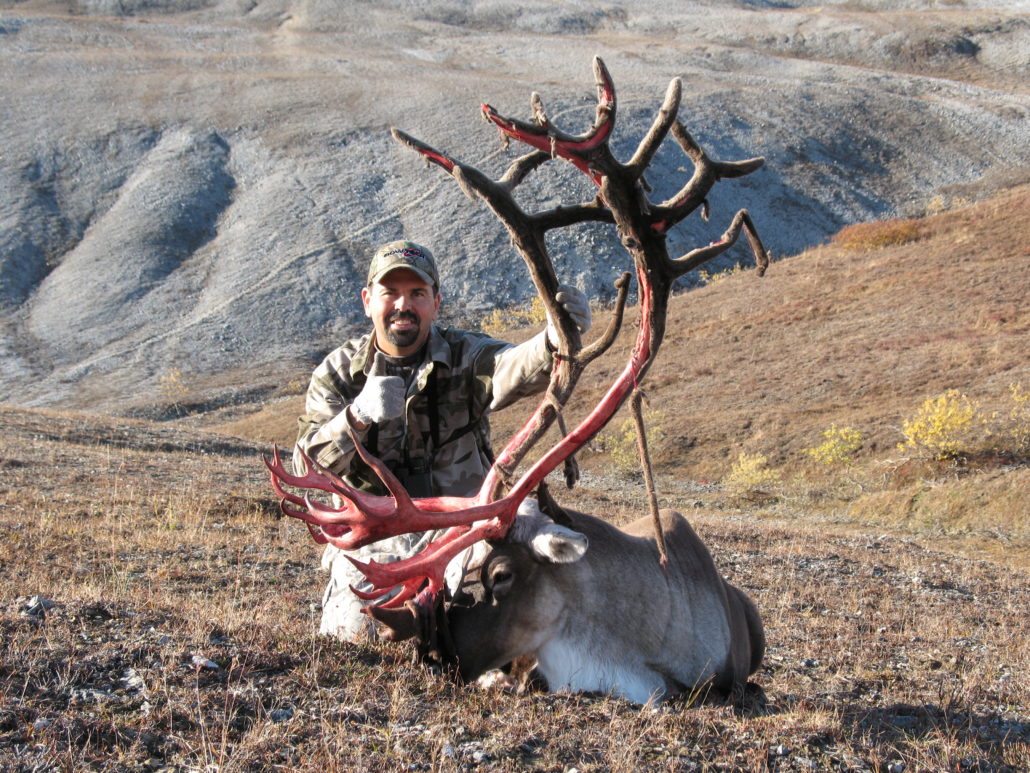Success on Barren Ground By Paul D. Atkins
Hunting Caribou, especially here in Alaska, is just like that, you have days filled with nothing and just being able to locate something with four-legs is a challenge or the opposite and you have monster bulls practically running over you in camp.
I could see that the conditions for our annual caribou hunt weren’t going to be great, warm weather combined with having to go so far just to find a herd told me it was going to be a tough bow-hunt. But as the days passed and the bulls began to trickle through, my spirits began to pick-up and just maybe we could get it done.
Hunting Caribou, especially here in Alaska, is just like that, you have days filled with nothing and just being able to locate something with four-legs is a challenge or the opposite and you have monster bulls practically running over you in camp. I have seen it both ways, but even those days that are sometimes not ideal can still prove to be a great adventure and a lot of fun. Here are few guidelines to follow so you too can be successful on your next Caribou hunt.

Where to Go
Caribou can be found throughout Alaska. There are several herds that roam the state and each are specific to a certain area. Numbers too will differ, for example the Western Arctic herd located in Northwest Alaska is the largest in the state and number close to a half a million. The chance of taking a nice bull is greater than say one of the smaller herds to the south. In addition you get to take two bulls on your trip, which makes it nice when you are truly trying to arrow that bull of a lifetime.
However the Western Arctic herd may not be your choice for true monsters; some of the smaller herds harbor much bigger bulls in terms of antler size. The Mulchatna herd located in the Mulchatna river drainage west of Anchorage is an example of this, it’s much smaller in terms of numbers, but the bulls are much bigger. If you flip through the Pope and Young record book you can see what I’m talking about. The only downfall of these smaller herds is that most are drawing only areas whereas tags for the Arctic herd can be bought over the counter.
Wherever you decide to go just make sure you do your homework, research the different areas and herds and apply for the proper licenses and tags. Contacting the area biologist for the current conditions of a specific herd is a great way to start. You can contact them through the Alaska Department of Fish and Game at www.adfg.state.ak

Equipment
Today’s archery equipment has become so advance that just about any set-up will get the job done. The state does require a minimum of 40 pounds draw weight and a broad head that has a cutting diameter of at least 7/8 inches. Flat shooting, short axel-to-axel bows such as the new BowTech SR6 work great whether on the open tundra or stalking one of the many willow choked rivers. Being able to shoot longer distances can sometimes be a must particularly if you catch that big bull coming across the open with no cover. Years ago I made the mistake of crossing an open area to get to a shallow ditch on the far side. Half way through the trek I ran right into one of the biggest bulls I have ever seen. He didn’t seem to be in a hurry, but he was out of range with the set-up I was carrying. With the advancement in archery gear these days I would have definitely have tried that shot. Tough built bows that are flat shooting, forgiving and something you can shoot well will be a big plus on the Tundra.
Broad heads have come a long way as well. There are hundreds to choose from, but remember not all are created equal. Caribou are not particularly tough to kill, but you will need to get good penetration. Choose a head that flies like a field point and does well in the wind. I have tried several and found that most good heads work perfectly. I personally use the Wasp line with the “Drone” being one of my favorites. I once shot a bull at 40 yards that was practically going straight away from me. The arrow entered far back and went completely through then entire bull. A good broad head that shoots well out of your set-up could make all the difference in whether you take home a caribou of a lifetime or not.
If you’re a rifle hunter then anything in the .270 class or larger will work fine. A good rifle and a good scope, plus the ability to shoot well are a must. Other than the essentials you should have the best binoculars you can afford and a reliable rangefinder. Spotting scopes are a good thing, but not necessarily needed on caribou hunt. Also, if you can find room bring a soft case to put it all in. Bush Planes are small and big cases will usually get left at the airport, but a soft case will protect your gear somewhat when it’s shoved into the Super cub. Last but certainly not least you need to rent or buy a satellite phone. They can and will save your life, especially if something goes wrong and you’re hundreds of miles from help.

Be Prepared
Caribou are always iffy at best. Unless you land right smack dab in the middle of a migrating herd you may have to work hard to get it done. Most hunts are usually 5-7 days and can be done guided or unguided. The do-it-yourself hunts are in my opinion the only way to go, but does require a lot of planning and preparation.
Once you decide that a caribou hunt is just what you need and you have purchased your airline tickets north, you will need to get the logistics of the whole hunt set-up. This will require hiring a transporter. A transporter is not a guide. He or she is the person that gets you from point A to point B and back again. Most are veteran bush pilots and have been doing this kind of work for a long time, but like archery equipment not all are created equal. Again make sure you do your homework and select wisely. Remember your life is in their hands both in the air and on the ground.
If you’re going the DIY route you will also need to plan the rest of your camp, shelter and food being the two main components. Depending how many hunters will be in camp you will need to plan accordingly. Bush planes are small and weight does become an issue, plus the fact that you are getting charged by the hour and one trip out is a lot cheaper than two or three. I myself like lightweight tents versus the heavy bulky type. They are significantly lighter and take up little space, which will allow you to take other items that are of more importance. In addition, depending on the number in your party, you might be able to take two small tents; one for sleeping and one for storing gear and keeping it dry. As far as food try and buy what you need from one of the local stores in the town you arrive in. It won’t be cheap I promise you, but at will at least contribute to the local economy. I usually try and take one cooler with everything needed for a 5-7 day hunt. Recently I have gone the dried food and MRE route; surprisingly all of it tasted very good and took up little room. You will also need a gas stove, cooking gear, a good water filter, game bags and a decent frame pack or large backpack plus knives. These are just the necessities for a great DIY type hunt.
¨Unless the weather is unusually warm in September, as it can be, caribou will be migrating and constantly on the move. If is warm they won’t move and generally just stay in one place. This can be bad for hunters who are stuck in one spot with no caribou coming through. Transporters will sometimes offer to move hunters, but it usually comes with a fee.¨

Hunting Styles
If you constantly hear the “click, click” of hooves outside your tent then you’ll probably be successful on your caribou hunt, but it will be short and maybe not too exciting. Being able to get out see the country, find a bull and try a few archery hunting strategies is the key to great time on the tundra.
Unless the weather is unusually warm in September, as it can be, caribou will be migrating and constantly on the move. If is warm they won’t move and generally just stay in one place. This can be bad for hunters who are stuck in one spot with no caribou coming through. Transporters will sometimes offer to move hunters, but it usually comes with a fee.
Ideally you want to be dropped off in an area that has a high concentration of animals moving through, combined with some type of funnel situation and decent cover. On open tundra a bow-hunter can usually see caribou coming from a mile away and they should use this to their advantage. Maneuvering into a position to intercept the herd by finding a concealed spot is the key to arrowing a nice bull.
Glassing is pretty much constant and a great way to find caribou. Hopefully your camp area will have a decent high place or hill to glass from. Climbing up in the early morning light to peruse the countryside is a great way to locate an unexpecting bull and plan accordingly.
If you are hunting one of the many willow-choked rivers then I would suggest using the spot and stalk method. Somewhat like ground hunting whitetail deer, a bow hunter needs to take his time, be alert and glass continuously. Anything can and will happen, as most times caribou appear out of nowhere and will most likely catch you off guard. Be careful though, as bears will be doing the same.
Last, but not least is patience. Of all the shooting sports bow and even rifle hunting requires the greatest patience and it’s even more so with the nomads of the north. Caribou can appear out of nowhere, one minute the tundra is empty and the Spruce trees vacant and the next minute hundreds are streaming by at 10 yards. The key is to wait, see what unfolds and then act, I can’t stress this enough. But whatever your hunting style give it some time, enjoy the hunt and with patience it will eventually pay off.
The caribou did start to trickle in on the 4th day of the hunt. I was sitting in camp on a cooler when I got the feeling something was watching me. I looked up and there stood a decent caribou bull feeding straight towards me. He didn’t seem too concerned, so I quickly grabbed my bow and put on my release. When I looked back up he was gone. I quickly saw that he entered a group of willows and was pushing his way through. Luckily the wind was right and I was able to get to the far side where he would come out. As the tops of antlers came into view I drew my BowTech and waited. Broadside at 43 yards I watched as the vanes disappeared behind the bulls shoulder, another great bull down. Caribou can appear at any time and success can find you when you least expect it.

(SIDE NOTE)
A Caribou hunt is still one of the cheaper adventures a person can go on without breaking the bank, particularly if you plan a do-it-yourselfer. An Alaska non-resident hunting license is still $85, and you can buy caribou tags over the counter for $650 a piece, a pretty cheap set-up considering the ever-increasing cost of non-resident tags in the lower 48. In addition there are some areas where you can take two bulls, which is a big plus and makes the hunt that more enjoyable.
Other than what I mentioned above here are a few things I do not leave the tarmac without:
- Extra socks-there is nothing like putting on a dry pair of socks at the end of a hard day of hunting. I recommend wool or synthetic with a lot of cushion for your feet. After miles of walking you will appreciate it.
- Tarp-Rain is a fact of life during Alaska’s fall seasons and personally I like to have a fire at the end of each day. After locating and gathering some firewood (as much as possible) cover it with a tarp. It will keep it dry and you will be able to use it during your hunt.
- Quality Rain Gear- Keeping dry and comfortable while hunting is the key to an enjoyable hunt. The long days in September will allow you to hunt 14-15 hours a day and rain is pretty much a guarantee. Personally I use the Sitka line, but Cabelas’ dry plus is also a good choice.
- Knee High Rubber Boots-Waders are not a must have when it comes to chasing caribou. Most times a good pair of knee high rubber boots that have great soles and good insulation will work fine. I personally wear a boot made by Cabelas that has 2000 grams of insulation and tremendous ankle support. Remember caribou are usually found on the tundra and crossing rivers won’t be a major concern. Besides waders are bulky, heavy and in my opinion very uncomfortable.
- Quality Game Bags-Not all game bags are equal. I found out a long ago that spending a few extra dollars for quality game bags like those sold at Cabela’s or Basspro will not only save you a lot of time, but keep your meat in better shape and your transporter in a better mood.
Paul Atkins is an outdoor writer and author from Kotzebue, Alaska. He has written hundreds of articles on big game hunting, and fishing throughout North America and Africa, plus surviving in the Arctic.


